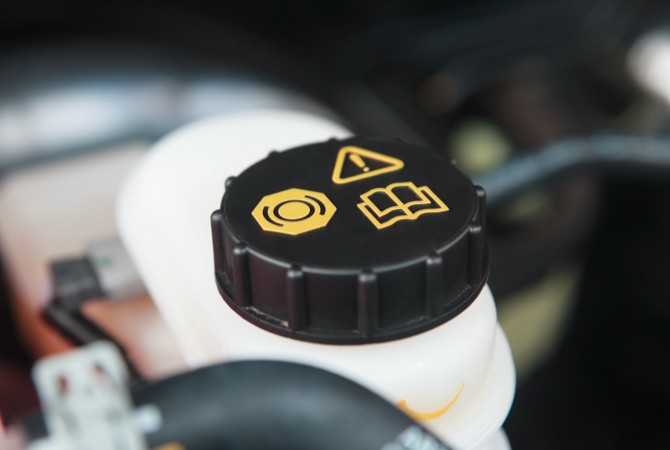Essential Fluid
To ensure that the brakes are in proper working order, the brake system should be inspected periodically. When inspecting the brake system, start by looking at the master cylinder and the brake fluid. Read on to learn how to check a vehicle’s brake fluid.
How the Master Cylinder Works
Begin by checking the minimum and maximum lines on the master cylinder to determine how much brake fluid it contains. Next, you’ll want to take notice of the float that is inside the master cylinder. As brake pads wear and become thinner, the piston and caliper move farther out, causing more brake fluid to be displaced. As the fluid is displaced, the fluid level drops and the float moves down with the brake fluid.
At the bottom of the brake fluid reservoir, there is a switch. When the float comes in contact with the switch, it triggers the brake light to become illuminated on the dash. When the brake light comes it is time to inspect the brake pads.
Tips

The master cylinder is a sealed system; the brake fluid shouldn’t have to be replaced unless there is a leak. The brake fluid level is constantly rising and falling, so you add fluid and there is too much in the reservoir, you won’t see the float drop to the point that it triggers the brake light to come on.
When looking at the brake fluid, you need to not only look at the level but the condition. When brake fluid is brand new, it is clear in color. As it wears, it turns black and can get some copper content in it. Periodically, around 50,000 miles, you should check the condition of the brake fluid to see if it needs to be serviced.
When the brake pads are replaced, it pushes the piston in and the fluid level comes back up.
Next Steps
Learn more about quality brake pads and rotors, find your car part, or find where to buy your auto part today.
The content contained in this article is for informational purposes only and should not be used in lieu of seeking professional advice from a certified technician or mechanic. We encourage you to consult with a certified technician or mechanic if you have specific questions or concerns relating to any of the topics covered herein. Under no circumstances will we be liable for any loss or damage caused by your reliance on any content.
OTHER PARTS FOR YOUR VEHICLE
Wagner® offers a wide variety of products for all of your automotive needs. Check them out today!